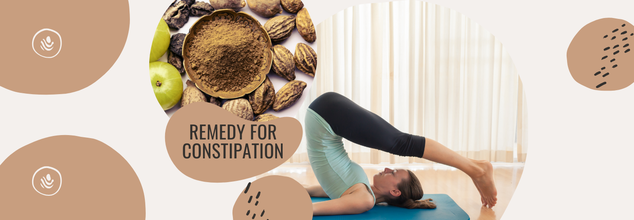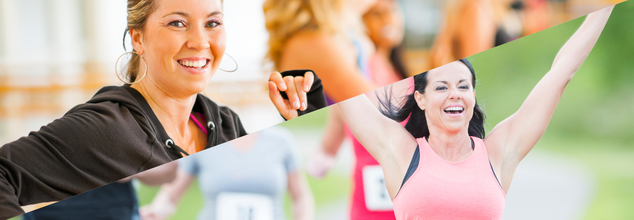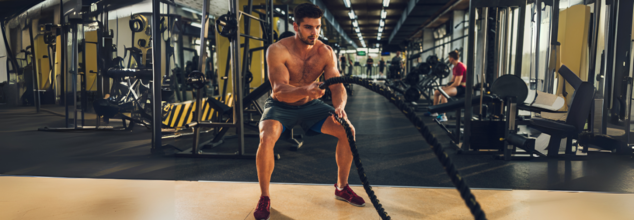- Health Conditions A-Z
- Health & Wellness
- Nutrition
- Fitness
- Health News
- Ayurveda
- Videos
- Medicine A-Z
- Parenting
- Web Stories
How Combining Yoga With Triphala Can Relieve Constipation

Constipation for remedy
When your digestive system feels out of sync, your first thought may not be yoga or triphala. However, both ancient practices could offer a gentle and effective solution for constipation. Yoga, through specific poses and breathing techniques, can massage your abdomen, stimulate digestion, and relieve discomfort. Similarly, triphala, an Ayurvedic herbal remedy, has long been trusted to promote bowel regularity and support gut health.
This combination can be a natural, holistic way to keep your digestive system running smoothly.
Physical activity is known to stimulate the muscles of the intestine, which is why regular movement can help ease constipation. Yoga takes this a step further, particularly through twisting poses and those that apply gentle pressure to the abdomen. These movements can engage your core muscles, encouraging the movement of waste through your digestive system.
A study conducted in 2015 found that yoga helped reduce symptoms of irritable bowel syndrome (IBS), which often includes constipation.
Beyond its physical benefits, yoga’s ability to activate the vagus nerve can restore balance to the gut-brain axis, as noted in a 2018 study. Simply by stimulating this nerve, yoga triggers anti-inflammatory effects that can improve gut health. Additionally, yoga’s stress-reducing qualities engage the parasympathetic nervous system, helping you "rest and digest" more effectively.
Common Causes of Constipation
A variety of factors can cause constipation. Stress, travel, lack of fiber, dehydration, and a sedentary lifestyle are common culprits. Additionally, conditions like Parkinson’s disease, multiple sclerosis, and certain medications can slow digestion. A recent study also revealed that individuals who recovered from COVID-19 may experience digestive issues, including constipation, for up to a year post-infection.
Yoga Poses to Relieve Constipation
While yoga isn't a cure-all for chronic digestive issues, it can certainly help ease symptoms. Here are some effective poses:
Cobra Pose (Bhujangasana): This mild backbend applies pressure to the abdomen, stimulating digestive activity.
Bow Pose (Dhanurasana): A deeper backbend, Bow Pose stretches the abdomen, enhancing blood flow and stimulating the intestines.
Half Lord of the Fishes Pose (Ardha Matsyendrasana): This twisting pose massages the abdominal organs and promotes digestion.
Squat Pose (Malasana): Squatting is a natural position that promotes easy elimination by aligning the digestive tract efficiently.
Remember, as you practice these poses, focus on slow and steady breathing. Holding your breath during these stretches can increase muscle tension, reducing their effectiveness in aiding digestion.
Can Triphala Relieve Your Constipation?
Growing up, my grandmother couldn’t praise triphala enough for its digestive benefits. At first, I was skeptical, but my faith in my grandmother eventually led me to try this herbal remedy.
Triphala is made from three medicinal plants: bibhitaki, amalaki (amla), and haritaki. This blend has gained a reputation worldwide for its potent healing properties, particularly for digestion.
Triphala acts as a natural laxative, promoting regular bowel movements without causing dependency like other laxatives might. It's especially useful for treating chronic constipation.
One of the key benefits of triphala is its ability to detoxify the gut. It encourages natural internal cleansing, improving digestion and bowel movement. For those looking to manage their weight, triphala can be a helpful addition to your routine. It enhances digestion, reduces bloating, and even stimulates the hormone cholecystokinin, which signals to your brain that you're full, preventing overeating.
If you’re struggling with constipation, incorporating yoga and triphala into your routine may offer relief. The gentle stretching and twisting of yoga poses massage your abdominal organs, while triphala works internally to regulate bowel movements.
Together, these practices provide a natural, holistic approach to digestive health, helping you feel lighter, less bloated, and more at ease.
Exercising At This Time Of The Day Not Only Helps Your Heart, But Also Strengthens Your Lungs

Exercising is a crucial part of keeping ourselves healthy. Whether it is walking, going to the gym or even working out at the weekends, it is very important for your body. Everybody has their own preferences regarding exercising, while some people find it much better to exercise early, others go for evening exercises.
Research published in the Medicine & Science in Sports & Exercise journal suggests that exercising in the morning could be especially good for the heart and lungs of older adults. The study also found that simply having a regular exercise routine can bring health benefits. Experts explained that getting physical activity earlier, consistently, and more often during the day might help you stay fit as you get older.
What the Study Revealed
To understand how the time we exercise affects our overall fitness and health, scientists looked at health information from 799 older adults (average age 76). Participants wore devices on their wrists for seven days to track their activity. They also underwent tests to check their heart and lung health and had regular doctor visits. Here's what researchers discovered:
- Being most active in the morning (what they called "peak morning activity") was linked to better heart and lung fitness and more efficient walking (meaning the body uses energy better while walking).
- Exercising at the same time each day consistently was connected to better health outcomes.
- People who had regular patterns of rest and activity throughout the day showed better heart and lung fitness and walking efficiency.
Why Exercise Timing Might Matter
There's still a lot to learn about how the timing of our physical activity affects our health and the risk of long-term diseases. More research is definitely needed to fully understand this link.
However, researchers suggested that the connection between exercise and our body's natural circadian clock (our 24-hour internal rhythm) might explain why timing matters. This internal clock controls things like body temperature and hormone release. So, the time of day you're most active could actually impact how well you perform and even how your muscles respond at a very basic level. Depending on the timing, working out could also either shift your internal clock or keep it steady, which seems to help muscle cell function and overall metabolic health.
Lastly, it's worth noting that everyone has a chronotype – whether you naturally feel more awake in the morning, afternoon, or evening. Scientists believe that knowing your chronotype and planning your activities accordingly could significantly impact your health and fitness.
Should You Exercise in the Morning?
The American Heart Association suggests getting 150 minutes of moderate exercise or 75 minutes of vigorous activity per week. But a growing amount of evidence suggests that even short bursts of movement – even just 20 minutes a week – can significantly benefit your heart.
One sports medicine doctor emphasized that any amount of exercise makes a difference and that whether you exercise is more important than when. Another expert agreed, highlighting that having a consistent exercise schedule is also very important. Both the new study and other research show that sticking to a routine offers many benefits, from preventing long-term diseases to improving survival rates with cancer.
Science Shows What Exercise You Should Do According To Your Personality

Many times, the things we like to do aren’t easy to do. While it may suit other people, there is no guarantee that it is the best for you. So how does one go about looking for the exercises that suit us? How about picking exercises according to your personality?
A recent study published in the Frontiers in Psychology journal suggests that picking your exercise according to the kind of personality you have could be the best idea. The study suggests that if your workout fits your personality, you're more likely to stick with it and see better results.
Researchers mentioned that our personality affects how we respond to and engage with exercise. Think of it from a different perspective, like a person who enjoys talking and having conversations with people, they fair better in jobs that allow more face-to-face interactions. Similarly, this study explains that some aspects of our personality could help us find better results with a certain type of exercise. Understanding ourselves and others can help create personalized fitness plans that lead to lasting changes in how active we are.
How Your Personality Shapes Your Workout Choices
Researchers wanted to make physical activity more enjoyable for people. So, they explored how personality affects what kind of exercise people prefer and how committed they are. They studied 86 individuals over eight weeks. First, participants filled out surveys about their stress levels and personality traits, like how friendly or anxious they tend to be. Then, they underwent fitness tests and were divided into two groups:
- A "resting" group that continued their usual daily activities and did some light stretching each week.
- Another group that performed cycling and strength training at home.
Throughout the study, participants regularly reported how much they enjoyed their exercise sessions.
Finding the Best Workout for Your Personality
The study didn't pinpoint exact exercises for specific personality types, but it did reveal some general patterns connecting what are called the "Big 5" personality traits with workout preferences:
- Extroverts often enjoy intense workouts with other people, like team sports.
- Anxious individuals tend to prefer private workouts with breaks built in.
- Conscientious people generally fit in more physical activity each week and show better overall fitness.
- Agreeable people like to exercise for a while but prefer activities that are less intense.
- Open-minded individuals are willing to try different workouts, but they might rate very strenuous or high-intensity exercises lower than other groups.
It makes a lot of sense that your personality strongly affects your workout preferences. Your traits influence your willingness to try new things, how you feel about effort, and your comfort in different environments, making exercise a natural way for these tendencies to show up.
Experts note that this study was stronger because it used objective measurements rather than just relying on what people reported about themselves, which is common in similar research.
However, the study wasn't perfect. More than 70% of participants were described as open-minded, conscientious, and emotionally stable, meaning the group might not fully represent everyone in the general population. Plus, the study didn't account for participants' past exercise experience or why they chose particular workouts.
Your Fitness Journey, Your Choices
Tailoring your fitness program to your personality could potentially boost your exercise gains and overall health. Finding workouts that people will actually do and stick with is crucial for consistent physical activity.
If you're thinking about trying a new workout, experts suggest reflecting on your own personality traits and the types of activities you usually gravitate toward. It's helpful to pay attention to how you feel after different types of sessions, whether it's a strength workout, yoga, or a run. Ask yourself if it energizes you, calms you down, or just makes you too tired for anything else.
However, it's also important to think about other factors that might help you stick with an exercise routine, such as how easy it is to access, any injuries you might have, and your specific fitness goals.
Being willing to adapt and create a plan that truly works for you will help you achieve more long-term benefits. Setting clear goals that include measurable progress is an excellent way to build towards success.
How Much Exercise Do You Need To Build Muscles - The Number Of Sets May Surprise You

(Credit-Canva)
For beginners, weight exercises may seem tedious and something that will take a long time to show results. Many people also find that sometimes even despite exercising regularly, slow progress can make them feel discouraged, leading them to grow tired of working out. However, research shows that you do not need countless hours of working out, there is a specific point and set of habits that lead to the best results.
A new study, a preprint posted in SportRxiv, reviewed 67 studies to pinpoint what exercise habits led to the best muscle and strength improvements. The findings indicate that while doing more sets in a weightlifting session helps with both muscle strength and growth, there's a point where it stops being as effective.
How Many Sets Are Best Per Workout?
One of the study's authors noted that while there's been much research on how often to train and how many sets to do, fewer studies looked at how to split your activity across different workouts. To find answers, the team analyzed many studies involving thousands of people. They looked at two types of sets:
- Direct sets which are exercises that primarily work a specific muscle.
- Indirect sets are exercises where a muscle is working, but it's not the main focus (counted as "half" a set).
Their analysis showed that muscle and strength generally increased with more sets per session. However, the data also showed a stopping point. Muscle growth leveled off after about 11 indirect sets in a single session. On the other hand Strength gains leveled off after around two direct sets in a single session. This means that the first few sets you do in a workout give you the biggest benefits. More sets do seem to help, but only up to a certain point.
Creating Your Ideal Strength Routine
The study's findings can help people make their workouts more efficient and plan their weight training. For strength, it makes sense to train more often—about two to three times a week—with relatively few sets each time. This approach also works for muscle growth. Alternatively, for muscle growth, you could go to the gym less often but do a few more sets in each session. Even if you're not super strict about your routine, know that regular, moderate strength exercise can have a big positive impact on your health.
Why Fewer Sets Can Lead to More Gains
It might seem strange that doing fewer sets could lead to more strength, but these findings match what earlier research has shown.
Fewer sets with heavier weights have long been known to increase strength by helping you improve your ability to produce force. The initial challenging sets help to use the most muscle fibers and kickstart most of the strength-building processes.
Basically, once you've done one or two hard sets, more sets after that add very little extra benefit. Instead, they add a lot more tiredness and make your recovery time longer. If you train too much over time, you'll feel more tired and won't perform as well, especially when it comes to pure strength.
Using Research to Plan Your Next Workout
Whether you're a fitness enthusiast or just starting, this research can guide you on how to get the most out of your weight training: try focusing on just a few sets, repeated about three times throughout the week.
For beginners, it's suggested to start with fewer sets and add more if you stop seeing results. When it comes to the ideal number of repetitions in each set, it depends on your fitness goals:
- Fewer reps (about 1 to 5) are good for strength and power.
- About 6 to 12 reps are best for building muscle.
- Between 13 and 20 reps are recommended for muscle endurance.
- Make sure to allow enough rest between workouts for the same muscle groups
- It also helps to track your workouts—like how many sets, reps, and what weight you lifted—and adjust based on how your body responds.
© 2024 Bennett, Coleman & Company Limited

